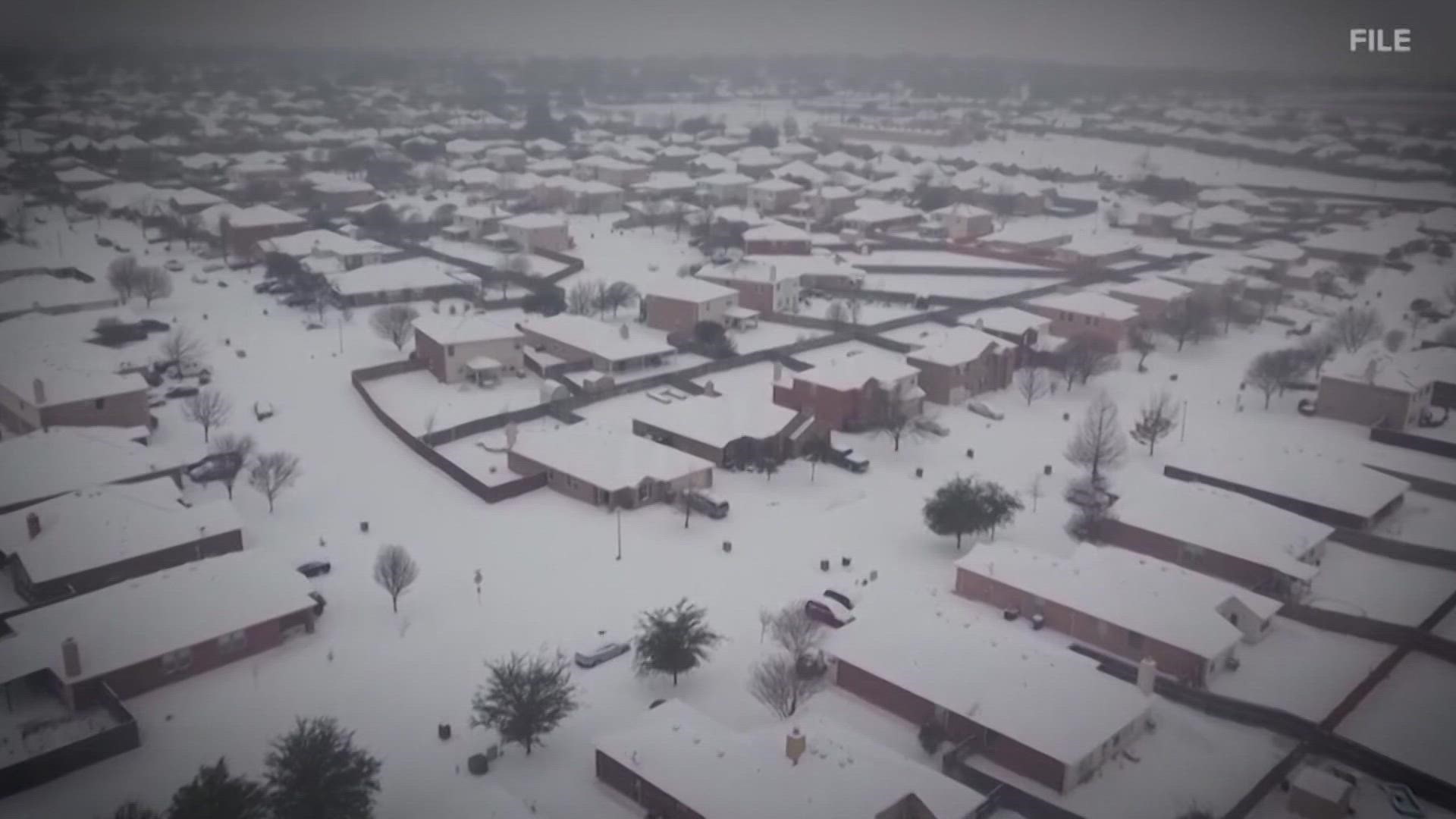DALLAS — Wintry temperatures are moving into North Texas later this week.
While this weather event will be nothing like the February 2021 winter storm - where the entire state saw sustained, below-freezing temperatures for more than a week - there is still the chance for power outages caused by the icing over of power lines and tree branches.
En español: Prepare su hogar para las congelantes temperaturas, apagones al llegar un frente frío al norte de Texas
Taking action now to prepare your home can help you in the long run, in the event we have freezing temperatures and power outages.
Find your water shutoff
Insurance company AAA recommends homeowners know where their water shutoff valve is and to know how to turn it off in case of an emergency.
To find it, your biggest clue, according to Angi.com, is knowing what kind of foundation you home is built on.
If it's on a slab, your valve should be found near your water heater tank. If your home has a basement, it will likely be there, in the same places as your outdoor hose bib, just on the other side of the wall. If you have a crawl space, it will likely be there, usually along the front wall of the home.
Worst case scenario, if you can't find your shutoff, and your home is rapidly filling with water, you can turn it off from the main water line, usually located in the front of the house in a covered box.
Keep cold air out of the house
AAA recommends repairing or replacing any problem spots on the exterior of your home that could allow for cold air to leak. This includes weather stripping around windows and doors, vents and fans, plumbing, air conditioners and electrical gas lines. Also, use caulk or insulation to seal any holes, cracks or small openings.
You should also remove all hoses from exterior faucets, and clean gutters and trim any tree branches that could fall on your home, according to Home Advisor.
Finally, making sure your basements and crawl spaces are well-insulated - including wrapping vulnerable pipes - will help protect exterior pipes.
Protecting indoor pipes
AAA says the air inside your home's walls, where pipes are located can be colder than the interior rooms. AAA recommends setting the thermostat at a "reasonable temperature," to keep the temperature regulated.
Also, AAA recommends keeping bathroom and kitchen cabinet doors open to allow warmer air to circulate pipes.
If you think your pipes might freeze
Experts recommend letting cold water drip from one faucet, which should be as far away from the water source as possible to allow water to flow the entire length of the system.
Letting the faucet drip helps prevent pipes from bursting if they happen to freeze over. But the real perk of letting the water drip, according to HowStuffWorks.com, is to help relieve the pressure that could build in the pipes between the ice blockage and the faucet.
Supplies to have on-hand
- Water meter key
- Insulation for indoor and outdoor pipes
- Hose bib cover for outdoor faucets
- Battery-powered flashlights
- Battery-powered radio
- One gallon of water per person for each day
- Emergency heat source, like a wood or coal-burning stove, and extra fuel
- Fire extinguisher, in case of an emergency
Contributing: KVUE's Britny Eubank and Meave Ashbrook.

